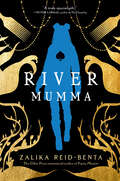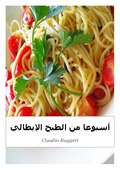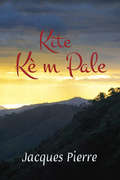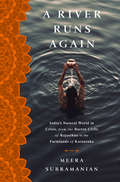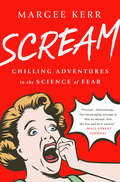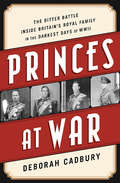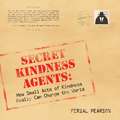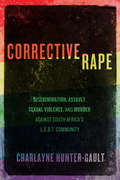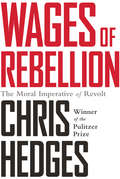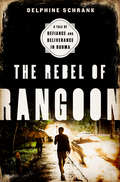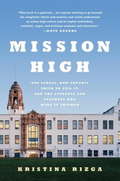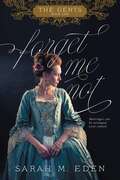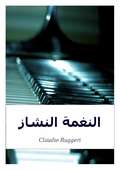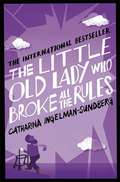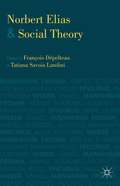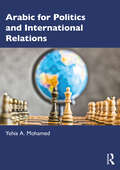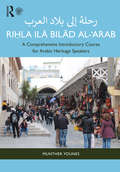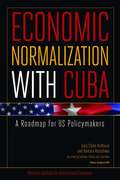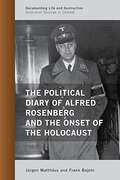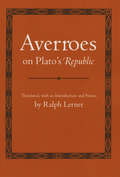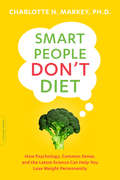- Table View
- List View
River Mumma
by Zalika Reid-BentaIssa Rae’s Insecure with a magical realist spin: River Mumma is an exhilarating contemporary fantasy novel about a young Black woman who navigates her quarter-life-crisis while embarking on a mythical quest through the streets of Toronto. Alicia has been out of grad school for months. She has no career prospects and lives with her mom, who won’t stop texting her macabre news stories and reminders to pick up items from the grocery store. Then, one evening, the Jamaican water deity, River Mumma, appears to Alicia, telling her that she has twenty-four hours to scour the city for her missing comb. Alicia doesn’t understand why River Mumma would choose her. She can’t remember all the legends her relatives told her, unlike her retail co-worker Heaven, who can reel off Jamaican folklore by heart. She doesn’t know if her childhood visions have returned, or why she feels a strange connection to her other co-worker Mars. But when the trio are chased down by malevolent spirits called duppies, they realize their tenuous bonds to each other may be their only lifelines. With the clock ticking, Alicia’s quest through the city broadens into a journey through time—to find herself and what the river carries. Energetic and invigorating, River Mumma is a vibrant exploration of diasporic community and ancestral ties, and a homage to Jamaican folklore by one of the most invigorating voices in today’s literature.
أسبوعا من الطبخ الإيطالي
by Claudio Ruggeri.قائمة الوصفات البسيطة والمعقدة لالطبخ الإيطالي ، "مسروقة" من القائمة لطباخ كبيرة، أمي
Kite Kè m Pale
by Jacques PierreIn his latest collection of poetry, Kite Kè m pale (Let My Heart Speak), Jacques speaks lovingly and eloquently about those, including women, who have faced and continue to face difficulties and injustice. His poetry sometimes resorts to uncommon forms of Kreyòl such as jagon and bolit to better expressed that which cannot conveyed commonly, and expose everyone to the linguistic wealth of the country.
A River Runs Again: India's Natural World in Crisis, from the Barren Cliffs of Rajasthan to the Farmlands of Karnataka
by Meera SubramanianCrowded, hot, subject to violent swings in climate, with a government unable or unwilling to face the most vital challenges, the rich and poor increasingly living in worlds a∂ for most of the world, this picture is of a possible future. For India, it is the very real present. In this lyrical exploration of life, loss, and survival, Meera Subramanian travels in search of the ordinary people and microenterprises determined to revive India’s ravaged natural world: an engineer-turned-farmer brings organic food to Indian plates; villagers resuscitate a river run dry; cook stove designers persist on the quest for a smokeless fire; biologists bring vultures back from the brink of extinction; and in Bihar, one of India’s most impoverished states, a bold young woman teaches adolescents the fundamentals of sexual health. While investigating these five environmental challenges, Subramanian discovers the stories that renew hope for a nation with the potential to lead India and the planet into a sustainable and prosperous future.
Scream: Chilling Adventures in the Science of Fear
by Margee KerrShiver-inducing science not for the faint of heart. No one studies fear quite like Margee Kerr. A sociologist who moonlights at one of America’s scariest and most popular haunted houses, she has seen grown men laugh, cry, and push their loved ones aside as they run away in terror. And she’s kept careful notes on what triggers these responses and why. Fear is a universal human experience, but do we really understand it? If we’re so terrified of monsters and serial killers, why do we flock to the theaters to see them? Why do people avoid thinking about death, but jump out of planes and swim with sharks? For Kerr, there was only one way to find out. In this eye-opening, adventurous book, she takes us on a tour of the world’s scariest experiences: into an abandoned prison long after dark, hanging by a cord from the highest tower in the Western hemisphere, and deep into Japan’s mysterious "suicide forest. ” She even goes on a ghost hunt with a group of paranormal adventurers. Along the way, Kerr shows us the surprising science from the newest studies of fear--what it means, how it works, and what it can do for us. Full of entertaining science and the thrills of a good ghost story, this book will make you think, laugh--and scream.
Princes at War: The Bitter Battle Inside Britain's Royal Family in the Darkest Days of WWII
by Deborah CadburyThis book tells the story of four sons of King George V during the period that the monarchy faced the greatest threats to its survival in the modern era the crisis of the abdication, and the nationwide threat to Britain of the Nazis, inside and out. The threat of world war echoed the war within the royal family. Played out against the cataclysm of the Second World War the princes’ actions for good or ill became all the more significant and magnified on a world stage. The war served to unleash passions at a time when the very function of royalty as head of the empire was under threat. It served as a crucible that made or destroyed each of the princes. One would die in mysterious circumstances forever mired in conspiracy and scandal; another was destroyed in all but name, a third slipped into comfortable obscurity, and the fourth rose to new heights of achievement redefining the monarchy for the modern age. The catalyst for the story is one dangerous American woman: Wallis Simpson. The consequences of her actions drive one prince to an early grave and the other to become a living wreck of a man nursing long held grievances. Recently discovered letters show that Wallis herself was caught in a trap of her own making: a life entombed in a gilded cage with a man she could not respect and whom she tried to leave. Everything she wished for, she destroyed. Famously she is said to have been sent 17 carnations by the Nazi Joachim von Ribbentrop, representing their 17 sexual trysts. George VI’s story is also an allegory for a much wider theme. Starting where the film The Kings Speech ends, a revealing transformation in his character takes place. As he steps up with some dread to the role of king that his older brother spurns, his horizons are widened and he falls into the sphere of influence of brilliant leaders such as Winston Churchill. As Hitler stole country after country for the Third Reich, George VI rose to the challenge, to find the very best in himself, and was transformed by the effort. By the end he can stand alone at the helm, without the support of those who helped him on his way Like fables of old, taking on the challenge transforms the quality of the man but it is also killing him.
Secret Kindness Agents: How Small Acts Of Kindness Really Can Change The World
by Ferial PearsonSometimes the small things make all the difference. Moved by the Sandy Hook Elementary School tragedy, Ferial Pearson wondered if a simple act of kindness could change a life. She thought of the school where she taught and the students she guided every day and wondered, what would happen if we started secretly carrying out small acts of kindness in school? Could a modest act of compassion really change the course of a life? She posed the question to her students. They didn’t have the answers but they were willing to find out. And so they became the Secret Kindness Agents. They not only changed the lives of those they met, they changed their own. Their hope, their hearts, and their hunger for happiness will inspire you to change your small corner of the world, in your own way, for the better. Let them show you how they did it, and how you can do the same.
Corrective Rape
by Charlayne Hunter-GaultRape, Sexual Violence, Murder, Discrimination, Assault, LGBT, Lesbian, Gay, Bisexual, Transgender, South Africa, Africa, L.G.B.T.
Wages of Rebellion
by Chris HedgesIn the face of modern conditions, revolution is inevitable. The rampant inequality that exists between the political and corporate elites and the struggling masses; the destruction wreaked upon our environment by faceless, careless corporations; the steady stripping away of our civil liberties and the creation of a monstrous surveillance system--all of these have combined to spark a profound revolutionary moment. Corporate capitalists, dismissive of the popular will, do not see the fires they are igniting. In Wages of Rebellion, Chris Hedges--a renowned chronicler of the malaise and sickness of a society in terminal moral decline--investigates what social and psychological factors cause revolution and resistance. Focusing on the stories of radicals and dissenters from around the world and throughout history, and drawing on an ambitious overview of prominent philosophers, historians, and novelists, Hedges explores what it takes to be a rebel in modern times. Hedges, using a term coined by the theologian Reinhold Niebuhr, cites "sublime madness” as the essential force that guides the actions of rebels--the state of passion that causes the rebel to engage in an unwavering fight against overwhelmingly powerful and oppressive forces. From South African activists who dedicated their lives to ending apartheid, to contemporary anti-fracking protestors in Canada, to whistleblowers in pursuit of transparency, Wages of Rebellion shows the cost of a life committed to speaking truth to power and demanding justice. This is a fight that requires us to find in acts of rebellion the sparks of life, an intrinsic meaning that lies beyond the possibility of success. For Hedges, resistance is not finally defined by what we achieve, but by what we become.
The Rebel of Rangoon: A Tale of Defiance and Deliverance in Burma
by Delphine SchrankAn epic, multigenerational story of courage and sacrifice set in a tropical dictatorship on the verge of massive transformation, The Rebel of Rangoon captures a gripping moment of possibility in Burma. Journalist Delphine Schrank spent four years underground tracking Burmese dissidents whose semi-clandestine existence and fight for democracy remained largely hidden behind their globally celebrated figurehead, Aung San Suu Kyi. With intimate, vivid prose, Schrank follows the inner life of a daredevil young dissident, his friends and rivals, across rural hamlets and flickering internet connections, into prison cells and safe houses, and deep into their own hearts, as they escape spies and outwit interrogators, fall in love or slip into insanity. Through that dissident’s perspective, Schrank unfurls a harrowing account of a country’s efforts to emerge from military dictatorship, how a movement of dissidents came into being, how it almost died, and how it pushed its government to crack apart and begin an irreversible process of political reform. In doing so, Schrank delivers a profoundly human exploration of daring and defiance and of the power and meaning of freedom.
Mission High: One School, How Experts Tried to Fail It, and the Students and Teachers Who Made It Triumph
by Kristina Rizga"This book is a godsend . . . a moving portrait for anyone wanting to go beyond the simplified labels and metrics and really understand an urban high school, and its highly individual, resilient, eager and brilliant students and educators. ” --Dave Eggers, co-founder, 826 National and ScholarMatch Darrell is a reflective, brilliant young man, who never thought of himself as a good student. He always struggled with his reading and writing skills. Darrell’s father, a single parent, couldn't afford private tutors. By the end of middle school, Darrell’s grades and his confidence were at an all time low. Then everything changed. When education journalist Kristina Rizga first met Darrell at Mission High School, he was taking AP calculus class, writing a ten-page research paper, and had received several college acceptance letters. And Darrell was not an exception. More than 80 percent of Mission High seniors go to college every year, even though the school teaches large numbers of English learners and students from poor families. So, why has the federal government been threatening to close Mission High--and schools like it across the country? The United States has been on a century long road toward increased standardization in our public schools, which resulted in a system that reduces the quality of education to primarily one metric: standardized test scores. According to this number, Mission High is a "low-performing” school even though its college enrollment, graduation, attendance rates and student surveys are some of the best in the country. The qualities that matter the most in learning--skills like critical thinking, intellectual engagement, resilience, empathy, self-management, and cultural flexibility--can’t be measured by multiple-choice questions designed by distant testing companies, Rizga argues, but they can be detected by skilled teachers in effective, personalized and humane classrooms that work for all students, not just the most motivated ones. Based on four years of reporting with unprecedented access, the unforgettable, intimate stories in these pages throw open the doors to America’s most talked about--and arguably least understood--public school classrooms where the largely invisible voices of our smart, resilient students and their committed educators can offer a clear and hopeful blueprint for what it takes to help all students succeed.
Forget Me Not
by Sarah M. EdenNOTTINGHAMSHIRE, 1785 Julia Cummings has long been acquainted with loss—her mother, her brother, her sister, her friend, all gone too soon. But the loss that pushed her grief to the limit as a young girl was that of her best friend, Lucas Jonquil, who abandoned her without looking back. Now, eight years later, Lucas has returned to Lampton Park, and Julia has steeled herself—she will never forgive the man who broke her heart. After losing too many of his friends and family to early deaths, Lucas vowed to live life to the fullest. And after traversing the world, he has returned from his adventures to find his family and home much as he left them—except for Julia. The little girl he left behind has blossomed into a captivating lady, a lady who makes it clear she despises him. With little hope of reconciliation, the former friends are blindsided when their parents make a shocking announcement. Lucas and Julia have been betrothed without their knowledge and are to marry immediately. Now Lucas must rely on the help of his closest friends to win the heart of a lady who loathes him—a lady he’s coming to love more deeply every day.
النغمةالنشاز
by Claudio Ruggeriرالف براندينبورج موسيقار يحظى بشهرة عالمية، وجد مقتولا في منزله بجوار البيانو الذي أحبه ووهبه عمره كله. تولى التحقيق في هذه القضية محقق الشرطة الإيطالي فينسنت چيرمانو، ولكنه لم يجد أي خيط يساعده على كشف غموض هذه الجريمة سوى أقوال من كان لهم علاقة في الماضي بهذا الفنان عازف النغمات وغريب الأطوار.
دور البصرة في نشأة الدراسات النحوية وتطورها مرحلة النشأة حتى الخليل بن احمد
by الأستاذ عبد الحسين المباركالكاتب يشير الى معنى النحو ف اللغه والاصطلاح ووضع النحو وواضعه .اولويات النحو البصرى وامصطلحاته والاثر الاجنبى ف نشأة الدراسات النحويه واوئل النحاة البصريين وجهودهم ف الدراسات النحويه
الارتسامات اللطاف في خاطر الحاج إلى أقدس مطاف
by شكيب أرسلان79-year-old Martha Anderson dreams of escaping her care home and robbing a bank. She has no intention of spending the rest of her days in an armchair and is determined to fund her way to a much more exciting life-style. Along with her four oldest friends - otherwise known as the League of Pensioners - Martha decides to rebel against all of the rules imposed upon them. Together, they cause an uproar with their antics: protesting against early bedtimes and plastic meals. As the elderly friends become more daring, their activities escalate and they come up with a cunning plan to break out of the care home and land themselves in a far more attractive Stockholm establishment. With the aid of their Zimmer frames, they resolve to stand up for old aged pensioners everywhere - Robin Hood style. And that's when the adventure really takes off . . . Translated by Rod Bradbury.
Norbert Elias and Social Theory
by X00e9 Fran X00e7 Ois D PelteauThis book will compare the approach and works of Norbert Elias, well known for his analysis of the civilizing process, his work on sport and violence and, more largely, his figurational approach, with other important social theories both classical and contemporary.
الأمن الوظيفى بعد التحكيم
by الذراع الاجتماعي لأكاديمية شرطة دبييمكن القول أن قضية الأمن الاقتصادى، على صعيد الاقتصاديات المتقدمة، تعد أحد أهم المكونات الجوهرية في السياسة الاقتصادية منذ الحرب العالمية الثانية ؛ فإذا كان خط الدفاع الأول عن كيان المجتمع، هو تحقق الأمن العام، فإن الأمن الاقتصادى يقع فى قلب الأمن العام؛ فلا كيان لدولة ما ولا استقرار بدون تحقق الأمن العام، ولا تحقق للأمن العام بدون تحقق الأمن الاقتصادى، مما يستوجب تمسك الدولة بتلابيبه إن كانت جادة في الحفاظ على أمنها العام.
Arabic for Politics and International Relations
by Yehia A. MohamedArabic for Politics and International Relations is the first textbook for high-intermediate to advanced students of Arabic that focuses on Arabic as it is used in the fields of politics, diplomacy, governance, and international relations.Thematically organised, each chapter includes a selection of authentic reading texts that demonstrate the language in use while introducing students to a key topic or theme such as political systems, government, human rights, conflict resolution, and defence. Each chapter has a range of exercises that include comprehension questions, questions designed to develop vocabulary, understanding the morphology, rhetoric and style. There are a range of activities that allow students to practice all four language skills: reading, listening, speaking, and writing.Arabic for Politics and International Relations is ideal for advanced- level Arabic courses.
Riḥla ilā Bilād al-‘Arab رحلة إلى بلاد العرب: A Comprehensive Introductory Course for Arabic Heritage Speakers
by Munther YounesRiḥla ilā Bilād al-‘Arab starts with the Arabic alphabet and gradually and systematically builds the reading and writing skills and mastery of Fuṣḥā grammar. As students develop their reading, writing, and grammar skills, they will be learning about Arab history, society, and culture. This book contextualizes Arabic grammar teaching with sufficient and relevant drills and exercises. Added personal and cultural interest is given by the diary of Amal, an American student of Arab descent, who travels to Jordan and Palestine. This textbook includes maps, illustrations, and photographs and is accompanied by audio on the companion website that can be viewed here: www.routledge.com/cw/younes . The book is designed for Arabic heritage students—students who can understand and speak an Arabic dialect (Egyptian, Iraqi, Moroccan, etc.) but are unfamiliar with Modern Standard Arabic, known as Fuṣḥā.
Economic Normalization With Cuba: A Roadmap For Us Policymakers
by Gary Clyde Hufbauer Barbara KotschwarGary Clyde Hufbauer, Reginald Jones Senior Fellow at the Peterson Institute for International Economics since 1992, was the Maurice Creenberg Chair and Director of Studies at the Council on Foreign Relations [1996-98), the Marcus Wallenberg Professor of International Finance Diplomacy at Georgetown University (1985-92), senior fellow at the Institute (1981-85), deputy director of the International Law Institute at Georgetown University 0979-81), deputy assistant secretary for international trade and investment policy of the US Treasury (1977-79), and director of the international tax staff at the Treasury (1974-76). Among his numerous coauthored books are Local Content Requirements: A Global Problem (2013), The United States Should Establish Permanent Normal Trade Relations with Russia (2012), Figuring Out the Doha Round [2010], and Economic Sanctions Reconsidered, 3rd edition (2007). Book jacket.
The Political Diary of Alfred Rosenberg and the Onset of the Holocaust
by Frank Bajohr Jürgen MatthäusPublished in association with the United States Holocaust Memorial Museum <P><P> In December 2013, after years of exhaustive search, the U.S. Holocaust Memorial Museum received more than four hundred pages of diary notes written by one of the most prominent Nazis, the Party’s chief ideologue and Reich minister for the occupied Soviet territories Alfred Rosenberg. By combining Rosenberg’s diary notes with additional key documents and in-depth analysis, this book shows Rosenberg’s crucial role in the Nazi regime’s anti-Jewish policy. In the second half of 1941 the territory administered by Rosenberg became the region where the mass murder of Jewish men, women, and children first became a systematic pattern. Indeed, months before the emergence of German death camps in Poland, Nazi leaders perceived the occupied Soviet Union as the area where the “final solution of the Jewish question” could be executed on a European scale. Covering almost the entire duration of the Third Reich, these previously inaccessible sources throw new light on the thoughts and actions of the leading men around Hitler during critical junctures that led to war, genocide, and Nazi Germany’s final defeat.
Averroes on Plato's "Republic"
by Averroes Ralph Lerner"In one fashion or another, the question with which this introduction begins is a question for every serious reader of Plato's Republic: Of what use is this philosophy to me? Averroes clearly finds that the Republic speaks to his own time and to his own situation. . . . Perhaps the greatest use he makes of the Republic is to understand better the shari'a itself. . . . It is fair to say that in deciding to paraphrase the Republic, Averroes is asserting that his world--the world defined and governed by the Koran--can profit from Plato's instruction."--from Ralph Lerner's IntroductionAn indispensable primary source in medieval political philosophy is presented here in a fully annotated translation of the celebrated discussion of the Republic by the twelfth-century Andalusian Muslim philosopher, Abu'l-Walid Muhammad Ibn Ahmad Ibn Rushd, also know by his his Latinized name, Averroes. This work played a major role in both the transmission and the adaptation of the Platonic tradition in the West. In a closely argued critical introduction, Ralph Lerner addresses several of the most important problems raised by the work.
See and Say Arabic
by Susan Muaddi DarrajHow do you apologize in Arabic? What’s the Arabic word for shoes? With this book, curious kids will see and say simple words and phrases in Arabic.
Smart People Don't Diet: How the Latest Science Can Help You Lose Weight Permanently
by MarkeyForget the fad diets: an associate professor of psychology (Rutgers) offers a science-based approach to healthy eating and weight management (backed by research from scientists, doctors, nutritionists, and psychologists).
الفهرس الموضوعي لمجلة مجمع اللغة العربية
by Aفهرس مفيد جدا يجمع الابحاث المنشورة بمجلة مجمع اللغة العربية ويرتبها و يصنفها لسهولة الوصول لكافة الابحاث و معرفة مواضيعها
